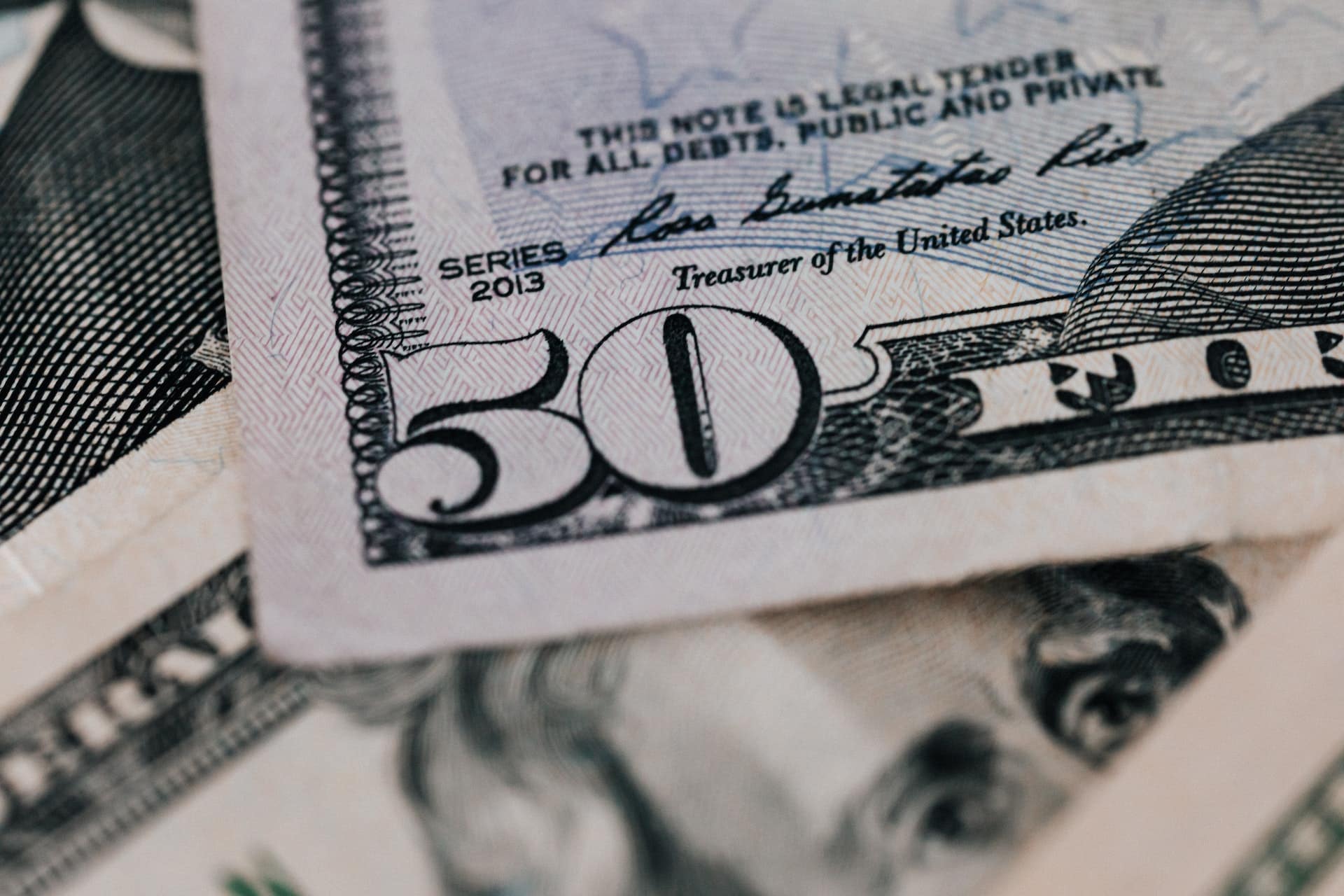In 2021, the average American household with credit card debt owed around $5,700.1 If you also use credit cards—rest assured that credit card debt is normal—knowing the ins and outs can help you better manage your finances. So what’s the difference between current balance vs available credit? Keep reading to learn credit card terms and how your credit card debt affects your credit score.
What Is the Difference Between My Available Balance and My Current Balance?
Knowing the difference between available balance and current balance is critical to managing your finances successfully.
Your current balance is the total amount you have spent using your credit card or how much credit you have spent. Suppose you just got a card and bought a leather jacket for $300. Your current balance would be $300 because that’s how much money you have spent. And so, consider your current balance as any money you have spent plus interest. It is imperative to keep track of your current balance.
An available credit is the amount of money you have left to spend using your card. In other words, the available credit is your credit limit minus your current balance and pending transactions.
You can also see your available credit on your online credit account. If the card issuer gave you a $1,500 credit line, but you have spent $500, then your available balance is $1,000.
The statement balance is the amount shown on your monthly card statement from charges that have changed from “pending” to “posted.”
How Do Lenders Decide a Borrower’s Credit Limit?
Financial institutions determine qualification for credit accounts on your gross annual income and credit history. Individuals with an excellent history of managing their personal finances typically get high credit limits, allowing them to have thousands of dollars in available credit. While you may still apply for a credit card with bad credit, you may not get a substantial credit limit.
However, you can get higher available credit by demonstrating your financial reliability.
Can I Use My Total Credit Limit/Available Credit?
You can max out your card and use the entire credit limit/all your available credit, but that may not be wise. Maxing out your card can leave you stuck in a debt spiral that’s hard to escape. Credit card debt is notoriously hard to pay off due to high interest rates and a required commitment plan. Many consumers end up stuck with a large debt that’s hard to shake off. However, sticking to a debt repayment plan, such as the snowball method, can make it easier to pay off credit card debt aggressively.
Can I Get a Credit Limit Increase on My Available Balance?
Yes, you can potentially get a credit increase on your available credit! If you have had your credit card for at least a month, you can ask your credit card issuer for a spending limit increase. If you do not get an increase now, it’s best to wait for 6 to 12 months before asking again.
Good Credit Can Lead to Higher Available Credit
Has your credit score improved since you got the credit card? An increased credit score shows that you can manage your money and make good financial decisions. Your recent credit history may prove that you won’t mismanage your credit card account as soon as you get a more substantial balance. Which can lead to more available credit.
Getting a Raise May Mean More Available Credit
If you recently got a raise at your place of employment, you may qualify for a higher credit limit on your credit card. When you have more money to spend, you can afford to pay back a higher current balance on a card, which can mean a higher credit limit/more available credit. The lender may feel confident granting you a higher credit limit, knowing you have the financial ability to pay back any large purchases.
An Excellent Payment History May Mean More Available Credit
Making continuous, on-time payments by the end of your billing cycle shows you are a responsible consumer. The money you pay each month is less important than paying by the due date.
Financial Terms Consumers With Credit Cards Need To Know
Credit card users need to know the difference between an available balance and a current balance. But you should know additional financial terms to better understand your credit card’s terms and conditions.
Annual Percentage Rate
A credit card’s annual percentage rate (APR) is the interest charge you pay for carrying a credit card balance.
Most credit cards charge different APRs depending on the financial activities of the borrower. For example, these are a few additional APRs you may have to pay for specific actions:
| APR Type | Description |
| Balance Transfer APR | Interest charged for moving debt from one credit card to another. |
| Cash Advance APR | When you withdraw cash using your credit card, you will have to pay a cash advance APR. |
| Introductory APR | Promotional interest rate for new credit card holders. Typically, the 0% APR only lasts for a short period before switching to the standard rate. |
| Purchase APR | Interest charge for new purchases. A purchase APR can be a fixed or variable interest rate. |
| Penalty APR | A percentage fee for having a credit card bill more than 60 days late. A penalty APR differs from the late fee but can still hurt your credit. |
Balance Transfer
A balance transfer is when you move one credit card balance to another credit card. Transferring a balance can help you save hundreds of dollars if the new credit card has a lower APR.
Balance transfer cards typically offer an introductory 0% APR that allows you to skip paying interest charges for a short period, usually 6 to 21 months. However, your credit card issuer may charge a balance transfer fee. Balance transfer fees are either a flat fee or a percentage of the debt transferred over. Keep in mind that you may not be able to transfer balances if you have two cards from the same financial institution.
In some instances, it may cost more to transfer credit card debt than to consolidate debt using a loan. Consider using installment loans, such as personal loan options, bad credit loans, or other predictable loans to pay off high-interest credit cards if you have a lot of debt to transfer.
Billing Cycle
A billing cycle is a timeframe from one credit statement to the next. According to the CARD Act, a billing cycle must be at least 21 days, but it can last as long as 45 days. You can view your billing cycle on your monthly statement.
Cash Advance
A cash advance is when you withdraw cash using your credit card at an ATM. You cannot withdraw the total amount of your credit limit, only a small portion. The amount you can get in cash depends on the credit card company. Cash advances can be costly since you have to pay a cash advance fee. A cash advance fee is typically 5% or $10 per advance (whichever is greater).
Credit Utilization Rate
Credit utilization is the amount of debt you have compared to your available credit. If your current balance is more than 30% of your credit limit, you have a high credit utilization ratio and may not get a substantial credit limit.
Minimum Payment
A minimum payment is the lowest amount you can pay at the end of each billing cycle. The amount you have to pay depends on how your card company calculates payments. Making a payment will increase your available balance.
FAQS
Automatic payments typically cover the statement balance or a set amount that you’ve chosen.
They won’t cover pending purchases or any new transactions that have occurred after the statement was generated unless you’ve opted for an amount that covers your maximum credit limit. Posted transactions will be covered.
Some card issuers offer overdraft protection as a feature where, if your bank account runs low, funds can be transferred from your card to cover the deficit and prevent overdraft fees. An overdraft fee occurs when you withdraw funds without having them in your bank account. This essentially acts as a cash advance with your credit card balances and may come with its own fees and higher interest rates.
When you make payments toward your current balance, your available credit should increase by the same amount, restoring some of your card’s credit limit.
However, there might be a slight delay between making the payment and seeing the update in your online account, especially if there are pending transactions or if the payment has to clear.
The Bottom Line With CreditNinja: Current Balance vs Available Credit
Your current balance is the amount of money you owe for using your credit card, while your available balance is the amount you have left to spend. Knowing exactly how a credit card works and where your money goes can help you improve your finances and build credit! For more tips on credit cards and beyond check out CreditNinja’s blogs!
References:






